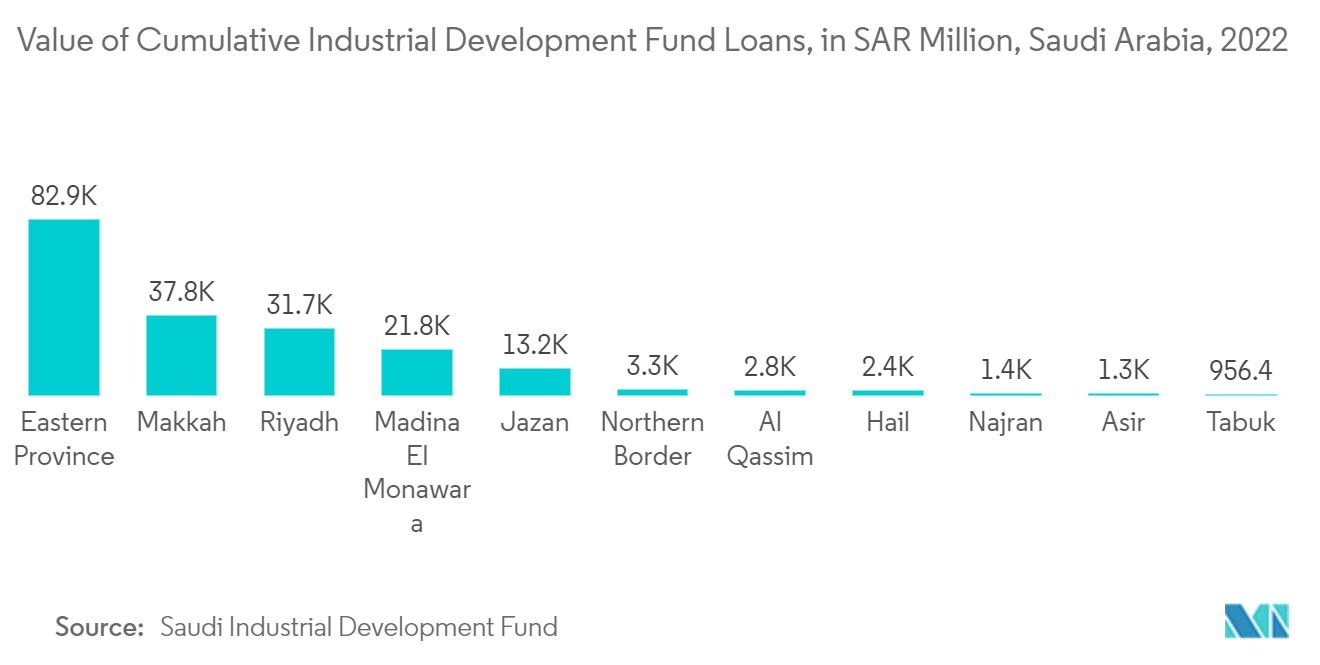Market Trends of Saudi Arabia Geospatial Analytics Industry
Geovisualization is Expected to Hold Significant Share of the Market
- Geovisualization is an emerging form of analysis that represents 'spatial' information in a visual manner to enable end-users to interact, analyze, communicate, and draw inferences from data. Geovisualization can be effectively used for data exploration in tandem with human understanding. It is also considered a loosely bound domain that emphasizes visual exploration, synthesis, and presentation of data by using key elements from cartography and other scientific domains. Geovisualization relies on the basic principles of geographic information systems (GIS), namely interaction, analysis, and providing actionable insights.
- The significant advantage of the evolution of geovisualization is the democratization of data through visual effects. It helps people understand the spatial data, and at the same time, it can incorporate qualitative aspects to the existing spatial data by creating a need for the same. For example, in the case of the development of Atlanta Geovisualization, sketch-based interaction and participatory design are being used extensively to analyze data crowdsourced from the community to design sustainable solutions for the city.
- Some of the's significant geovisualization applications include urban planning, environmental studies, forestry, surveying, and climate studies, among others. It is widely used during the planning and construction of smart cities, where stakeholders explore several real-world environments and alternative scenarios. The major features that have made Geovisualization invaluable for today's businesses are thematic mapping, heat maps, drawing and querying, and data points that can be represented numerically and graphically. Drawing and querying help a business isolate a particular geographic area and learn more about its demographic profile against its current customer relationship management (CRM).
- The players in the market are developing new products to cater to a wide range of needs of customers. For instance, in October 2022, Infotech, a player in infrastructure construction software solutions, announced it had launched the Appia service and a Construction Data Visualization extension in the Esri ArcGIS Marketplace. With this Esri ArcGIS integration, the Appia service is now a geo-enabled construction administration solution that allows owners to visualize the full story of civil infrastructure projects. In addition, Infotech has earned Silver partner-level status within the Esri Partner Network.
- According to Saudi Industrial Development Fund, the cumulative value of industrial development fund loans for the Eastern Province in Saudi Arabia almost reached SAR 83 billion (USD 22.13 billion) as of June 2022. The number of industrial factories in the Eastern Province was 1,298 at that time. Such a huge rise in the funding for industrial factories would push the companies to adopt geovisualization for the proper construction of the factories.

Real Estate and Construction is one of the Factor Driving the Market
- Saudi Arabia's economic and social reforms under Vision 2030 drive real estate investments and new opportunities for the sector. Rising demand for entertainment options is playing a significant role in increasing retail offerings, while the Kingdom's efforts to establish itself as a global business hub and major tourist destination are leveraging the growth of the hotel segment. While the construction of infrastructure contributes a large part to Saudi Arabia's development ambitions, many other commercials, medical, as well as otherwise non-infrastructure projects are underway.
- The construction industry in Saudi Arabia benefits from private and public sector players with an increased focus on reforms, supporting the region's Vision 2030. Under this long-term vision, the government planned several economic, educational, and related reforms to innovate and diversify Saudi Arabia's landscape. Additionally, Saudi Arabia unveiled a USD 900 billion development plan driven by its 2030 Vision. Jeddah Economic City, Neom, and the Red Sea Project are underway, together with significant infrastructure projects, including the USD 22.5 billion Riyadh Metro and USD 20 billion Diriyah Gate Project. These are expected to boost the demand for facility management in Saudi Arabia.
- According to Fitch Solutions, Saudi Arabia's construction industry is projected to accelerate its growth over the medium term. It is expected to witness an average real growth of 2.6% year-on-year between 2021 and 2025 after it surprised with a shallow 0.4% year-on-year contraction. Fitch Solutions anticipated that the public investment fund (PIF) will increasingly provide funding for the country's megaprojects, such as the Red Sea Project and NEOM, and effectively underwrite the ambitions of the Saudi Arabia government and ensure Vision 2030 is eventually realized.
- With the increase in urbanization, there is rising investment in infrastructure and construction. Geospatial technology and building information modeling (BIM) are used to intelligently model urban infrastructure in construction projects. This integration of BIM with geospatial technology eliminates data redundancy, promotes cost reduction in design, planning, and construction, and reduces other miscommunications.
- According to General Authority for Statistics, Saudi Arabia's GDP from the construction sector increased to SAR 30864 million (8,230.4 USD Million) in the of 2023 . Such a huge contribution by the construction sector towards the GDP would push the players in the region to invest more in the construction sector, which would create an opportunity for the studied market to grow.


